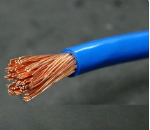I. What are drawn core rivets? Drawn core rivets are a type of single-sided riveting flying rivet, but they require the use of a specialized tool — a rivet gun (manual, electric, automatic) for riveting. This type of rivet is particularly suitable for riveting situations where it is inconvenient to use ordinary rivets (which require riveting from both sides), and thus it is widely used in products such as construction, automobiles, ships, aircraft, machinery, electrical appliances, and furniture.
II. What are the advantages of drawn core rivet equipment? Drawn core rivets have a wide range of riveting applications, are quick to install, and have stable and reliable performance. They are used in the processing and manufacturing industry worldwide. The main advantages of using them include: 1. Single-sided construction 2. Wide riveting range 3. Quick installation 4. High clamping force, good shock resistance 5. Smooth rivet fracture, strong core locking ability.
III. What are the standard installation steps for drawn core rivets? 1. Load the rivet into the gun nozzle and insert it into the pre-drilled hole. 2. Start the tool, pull the rivet to expand and fill the workpiece hole. 3. When the load reaches a predetermined value, the rivet breaks smoothly at the head, and the shank is locked tightly in the rivet.
IV. What are the working principles of drawn core rivets? The working principle of drawn core rivets is achieved by pulling the core. It relies on a force that acts from the inside out. To better apply drawn core rivets, one must first understand the working principle in detail. Below, the editor will introduce the working principle of the rivet using a combination of text and images. Open-end oval head drawn core rivets are the most widely used, while countersunk drawn core rivets are suitable for applications requiring a smooth riveted appearance. Closed-end drawn core rivets are used in situations that require higher loads and a certain degree of sealing performance.
The riveting of drawn core rivets involves using a metal cylinder or metal tube (rivet) slightly smaller than the perforation diameter to pass through the workpiece that needs to be riveted and then striking or pressing the two ends of the rivet to deform and thicken the metal column (tube) while forming rivet heads (caps) at both ends, preventing the workpiece from coming off the rivet. When external forces that cause the workpieces to separate are applied, the shear force generated is borne by the rivet shank and cap, preventing the workpieces from separating.
Drawn core riveting is divided into cold riveting and hot riveting. Cold riveting is when the rivet is riveted at room temperature; hot riveting is used in places with higher connection requirements, such as the riveting of steel beams in iron bridges. When hot riveting, the rivet needs to be preheated, and the red-hot rivet is inserted into the rivet hole. After forming the rivet head, the stress from contraction during the cooling process will make the connection tighter.
Drawn core rivets are also important tools for riveting. Riveting generally requires double-sided operation, but the advent of drawn core rivets has made single-sided operation a simpler and more feasible process.





 Customer service 1
Customer service 1  Customer service 2
Customer service 2